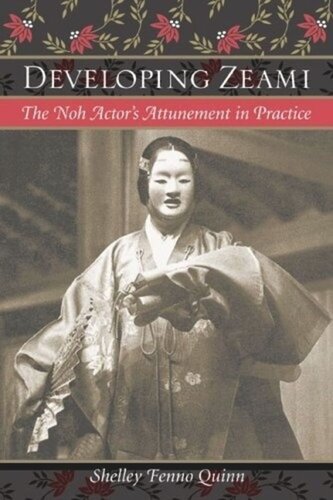

Most ebook files are in PDF format, so you can easily read them using various software such as Foxit Reader or directly on the Google Chrome browser.
Some ebook files are released by publishers in other formats such as .awz, .mobi, .epub, .fb2, etc. You may need to install specific software to read these formats on mobile/PC, such as Calibre.
Please read the tutorial at this link: https://ebookbell.com/faq
We offer FREE conversion to the popular formats you request; however, this may take some time. Therefore, right after payment, please email us, and we will try to provide the service as quickly as possible.
For some exceptional file formats or broken links (if any), please refrain from opening any disputes. Instead, email us first, and we will try to assist within a maximum of 6 hours.
EbookBell Team

4.1
100 reviewsThe great noh actor, theorist, and playwright Zeami Motokiyo (ca. 1363-1443) is one of the major figures of world drama. His critical treatises have attracted international attention ever since their publication in the early 1900s. His corpus of work and ideas continues to offer a wealth of insights on issues ranging from the nature of dramatic illusion and audience interest to tactics for composing successful plays to issues of somaticity and bodily training. Shelley Fenno Quinn’s impressive interpretive examination of Zeami’s treatises addresses all of these areas as it outlines the development of the playwright’s ideas on how best to cultivate attunement between performer and audience.
Quinn begins by tracing Zeami’s transformation of the largely mimetic stage art of his father’s troupe into a theater of poiesis in which the playwright and actors aim for performances wherein dance and chant are re-keyed to the evocative power of literary memory. Synthesizing this remembered language of stories, poems, phrases, and their prosodies and associated auras with the flow of dance and chant led to the creation of a dramatic prototype that engaged and depended on the audience as never before.
Later chapters examine a performance configuration created by Zeami (the nikyoku santai) as articulated in his mature theories on the training of the performer. Drawing on possible reference points from Buddhist and Daoist thought, the author argues that Zeami came to treat the nikyoku santai as a set of guidelines for bracketing the subjectivity of the novice actor, thereby allowing the actor to reach a certain skill level or threshold from which his freedom as an artist might begin.